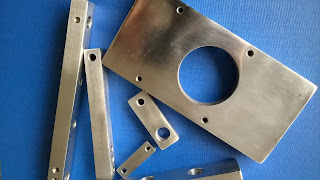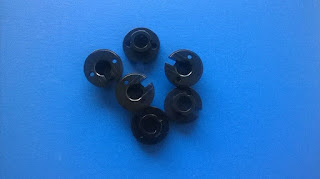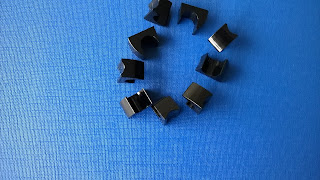Electric spark forming processing
technology present situation and trend of
development
I、Introduction
Precision metal parts As an advanced technique of manufacture important
branch, the special processing technology, the electric spark machining
technology, since the 20th century 40's foundations, has had been through
repeatedly in particular for more than half centuries the development, has
become the advanced technique of manufacture domain indispensable important
constituent. Enters after in particular the human for 1990s, along with high
technology and new technology and so on information technology, networking,
aviation and astronautics technology, materials science technology development,
the electric spark forming processing technology also faces a deeper level, the
high level direction is developing. Although some traditional processing
technology through own unceasing renewal development as well as with other
correlation technology fusion, difficult to process the material processing
domain in some (especially in mold processing domain) to display the processing
efficiency higher superiority, but these technical application has been
impossible to substitute for the electric spark forming processing technology
difficultly to process processing domain completely and so on in the material,
complex profile, mold statuses. On the contrary, the electric spark forming
processing technology through profits from other processing technology the
development experience, to the micro refinement, highly effective directions
and so on, precision, automation, intellectualization is developing
unceasingly.
II、Electric spark forming processing technology development present
situation
Precision metal parts At present, in electric spark machining basic theory research area,
because the electric discharge process itself complexity, randomness as well as
the research method lack the innovation, until now not yet made the
unprecedented progress. But in processing craft and control fundamental
research domain, because the research results may apply directly in the
production practice, therefore has become in the present electric spark forming
processing engineering research a more active domain, its research hot spot
mainly concentrates in the highly effective processing technology, the high
precise processing technology (glassy surface processing technology), the low
loss processing technology, the tiny processing technology, the non-conducting
material processing technology, the electric spark surface treatment
technology, the intelligent control technology (for example artificial neural
networks technology, fuzzy control technology, expert system and so on) as well
as aspects and so on operational safety, environmental protection. In the
process unit development aspect, the present new electric spark forming processing
engine bed in aspects and so on processing function, processing precision,
automaticity, reliability improved comprehensively, many engine beds have had
online functions and so on examination, intelligent control, modulation, no
longer is in the traditional significance special processing engine bed, but
looks like in the machining the numerical control engine bed even to process
the center.
III、Electric spark forming processing technology trend of development
Precision metal parts The advanced technique of manufacture fast
development and the manufacturing industry market competition aggravating
proposed to the electric spark forming processing technology a higher request,
simultaneously also for the electric spark forming processing technology
processing theory research and the craft development, the equipment renewed has
provided the new power. The next electric spark forming processing processing
object will be supposed mainly to face the tradition machining not not easily
to realize difficultly to process processings and so on material, complex
profile, in which fine processing, the precise processing, the narrow dadoing,
the deep cavity processing and so on becomes the development priorities. At the
same time, but also should pay attention with other special processing
technology or the traditionElectric spark forming processing
technology present situation and trend of
development
I、Introduction
Precision metal
parts As an advanced technique of manufacture important
branch, the special processing technology, the electric spark machining
technology, since the 20th century 40's foundations, has had been through
repeatedly in particular for more than half centuries the development, has
become the advanced technique of manufacture domain indispensable important
constituent. Enters after in particular the human for 1990s, along with high
technology and new technology and so on information technology, networking,
aviation and astronautics technology, materials science technology development,
the electric spark forming processing technology also faces a deeper level, the
high level direction is developing. Although some traditional processing
technology through own unceasing renewal development as well as with other
correlation technology fusion, difficult to process the material processing
domain in some (especially in mold processing domain) to display the processing
efficiency higher superiority, but these technical application has been
impossible to substitute for the electric spark forming processing technology
difficultly to process processing domain completely and so on in the material,
complex profile, mold statuses. On the contrary, the electric spark forming
processing technology through profits from other processing technology the
development experience, to the micro refinement, highly effective directions
and so on, precision, automation, intellectualization is developing
unceasingly.
II、Electric spark forming processing technology development present
situation
Precision metal parts At present, in electric spark machining basic theory research area,
because the electric discharge process itself complexity, randomness as well as
the research method lack the innovation, until now not yet made the
unprecedented progress. But in processing craft and control fundamental
research domain, because the research results may apply directly in the
production practice, therefore has become in the present electric spark forming
processing engineering research a more active domain, its research hot spot
mainly concentrates in the highly effective processing technology, the high
precise processing technology (glassy surface processing technology), the low
loss processing technology, the tiny processing technology, the non-conducting
material processing technology, the electric spark surface treatment
technology, the intelligent control technology (for example artificial neural
networks technology, fuzzy control technology, expert system and so on) as well
as aspects and so on operational safety, environmental protection. In the
process unit development aspect, the present new electric spark forming processing
engine bed in aspects and so on processing function, processing precision,
automaticity, reliability improved comprehensively, many engine beds have had
online functions and so on examination, intelligent control, modulation, no
longer is in the traditional significance special processing engine bed, but
looks like in the machining the numerical control engine bed even to process
the center.
III、Electric spark forming processing technology trend of development
Precision metal
parts The advanced technique of manufacture fast
development and the manufacturing industry market competition aggravating
proposed to the electric spark forming processing technology a higher request,
simultaneously also for the electric spark forming processing technology
processing theory research and the craft development, the equipment renewed has
provided the new power. The next electric spark forming processing processing
object will be supposed mainly to face the tradition machining not not easily
to realize difficultly to process processings and so on material, complex
profile, in which fine processing, the precise processing, the narrow dadoing,
the deep cavity processing and so on becomes the development priorities. At the
same time, but also should pay attention with other special processing
technology or the tradition machining technology compound application, displays
each processing method difficultly to process in the material processing fully
the superiority, obtains the union increment effect. Is opposite says in the
machining technology, the electric spark forming processing technology was
still a young technology, therefore in the next development, will be supposed
to profit from the experience and the achievement which in the machining
technological development process will obtain, will process own technical
characteristic according to the electric spark forming, will select the
suitable processing theory, the control principle and the technique, and will
have in the achievement foundation in oneself to consummate, the innovation
unceasingly. The electric spark forming processing engine bed the tendency
which develops to the numerical control direction already irreversible, but
should pay attention cannot pursue blindly “large and complete”. should take
the market as the guidance, the establishment has the open numerical control
system. Overall, the electric spark forming processing technology next trend of
development should be the high efficiency, the high accuracy, the low loss, the
micro refinement, the automation, the security, the environmental protection
and so on. machining technology compound application, displays
each processing method difficultly to process in the material processing fully
the superiority, obtains the union increment effect. Is opposite says in the
machining technology, the electric spark forming processing technology was
still a young technology, therefore in the next development, will be supposed
to profit from the experience and the achievement which in the machining
technological development process will obtain, will process own technical
characteristic according to the electric spark forming, will select the
suitable processing theory, the control principle and the technique, and will
have in the achievement foundation in oneself to consummate, the innovation
unceasingly. The electric spark forming processing engine bed the tendency
which develops to the numerical control direction already irreversible, but
should pay attention cannot pursue blindly “large and complete”. should take
the market as the guidance, the establishment has the open numerical control
system. Overall, the electric spark forming processing technology next trend of
development should be the high efficiency, the high accuracy, the low loss, the
micro refinement, the automation, the security, the environmental protection
and so on.

















